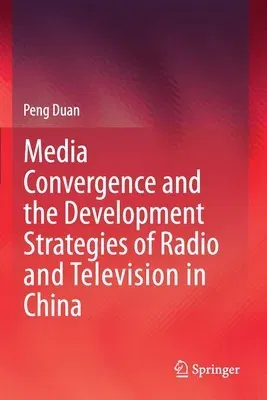CHAPTER ONE: THE RISE, CONCEPT AND MANIFESTATIONS OF MEDIA CONVERGENCE
1.1 Concept and research overview of media convergence 1.2 Impetuses to
the rise of media convergence 1.2.1 Internal impetuses 1.2.2 External
forces 1.3 Manifestations of media convergence 1.3.1 Microscopic level:
the convergence of media technologies 1.3.2 Mesoscopic level: the
convergence of organisational structures, production processes and
product forms 1.3.3 Macroscopic level: the convergence of the media
industry, media regulation as well as media and society CHAPTER TWO: THE
CHALLENGES AND OPPORTUNITIES FACING RADIO AND TELEVISION AGAINST THE
BACKGROUND OF MEDIA CONVERGENCE 2.1 The challenges and predicaments
facing radio and television against the background of media convergence
2.1.1 The predicament of talent loss: the separation of "top resources"
2.1.2 The predicament of advertising loss: the transfer of capital
support 2.1.3 The predicament of interest patterns: the transformation
of the media market 2.1.4 The challenge of communication channels: new
media begin to set the agenda for traditional media 2.1.5 The challenge
of communication platforms: the changing and growing demand of audience
for information 2.1.6. The challenge of communication content: the
online culture that is shaping the social forms 2.1.7 The challenge of
media operations: systematic pitfalls and losing sway in public opinion
2.1.8 The challenge of organisation management: deficiencies in
departmental setup and the talent-cultivation system 2.2 Inadequacies
and causes of radio and television against the background of media
convergence 2.2.1 Macro-perspective 2.2.2 Meso-perspective 2.2.3
Micro-perspective 2.3 Exploring the causes impeding the business
development of media convergence 2.3.1 Deep-rooted inertial thinking of
conventional media failing to adapt to the development needs of the
Internet 2.3.2 Barriers of conventional systems and mechanisms become
institutional factors of media transformation 2.3.3 Lack of quality
content online, where conventional content still dominates 2.3.4
Conventional channels dominate, new-media channels lack variety and
inadequate online infiltration 2.3.5 Insufficient use and convergence of
technology by new media 2.4 Development opportunities for radio and
television against the background of media convergence 2.4.1
Content-wise: diverse sources and formats 2.4.2 Channel-wise: complement
and convergence of new and old media 2.4.3 Platform-wise: the drive of
digital technology and social mechanisms 2.4.4 Operation-wise:
development of the media market and changes of profit models 2.4.5
Management-wise: renewal of management concepts and organisational
structures CHAPTER THREE: CASES OF REFORMS OF RADIO AND TELEVISION
AGAINST THE BACKGROUND OF MEDIA CONVERGENCE 3.1 Cases of media
convergence of foreign radio and television 3.1.1 Media convergence of
the BBC 3.1.2 Media convergence of CNN 3.1.3 Media convergence of NHK
3.2 Cases of reforms of radio and television in China 3.2.1 Media
convergence of new-media newsroom of China Global Television Network
3.2.2 Media convergence of Shanghai Media Group 3.2.3 Media convergence
of Golden Eagle Broadcasting System 3.2.4 Media convergence of Shenzhen
Media Group单击此处输入文字。 CHAPTER FOUR: COMMUNICATION STRATEGIES OF
RADIO AND TELEVISION AGAINST THE BACKGROUND OF MEDIA CONVERGENCE 4.1 The
evolution of China's media system 4.1.1 Initial choice: party-controlled
media 4.1.2 First r


